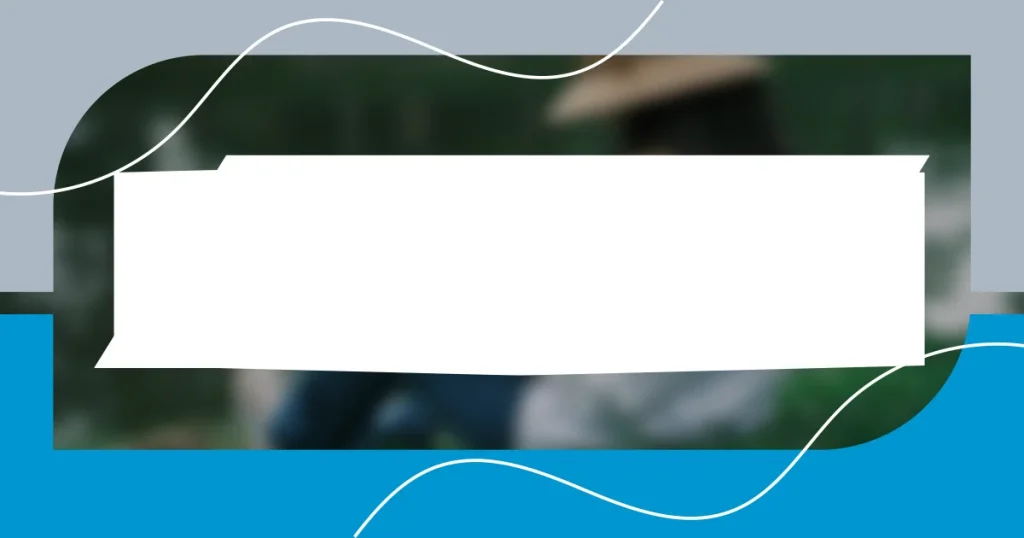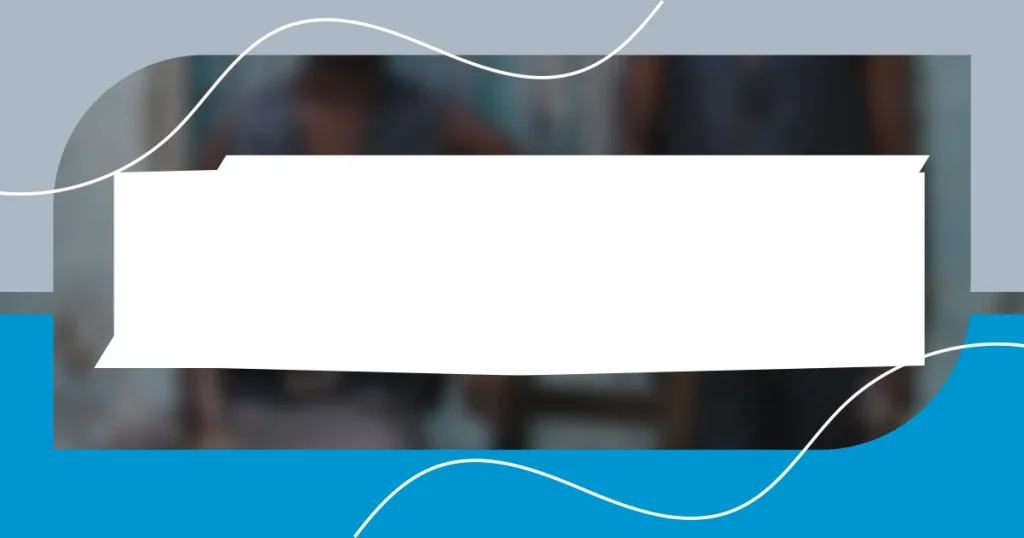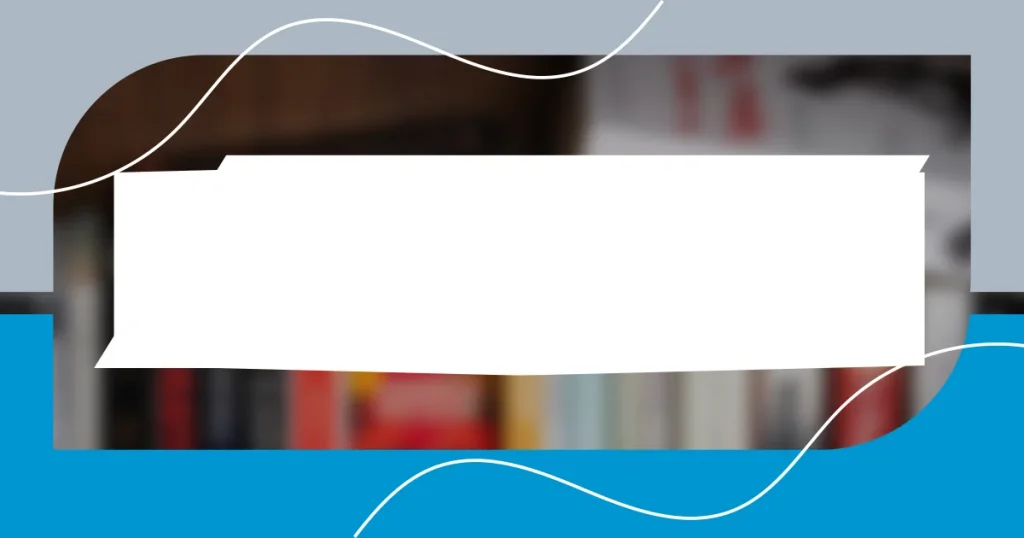Key takeaways:
- Cultural criticism challenges us to examine and reinterpret the media and art we consume, revealing deeper truths about societal values and personal biases.
- Understanding the role of perspective in cultural criticism can evoke powerful emotional responses and highlight how individual backgrounds influence interpretations of narratives.
- Engaging with diverse viewpoints enriches our understanding of culture, as different experiences and backgrounds bring unique insights to shared themes and stories.

Understanding cultural criticism
Cultural criticism serves as a lens through which we can examine the artifacts of our society, whether it’s literature, music, or visual art. I remember attending a gallery opening where a local artist’s work was deeply intertwined with social issues. It made me wonder: how often do we look at art as a reflection of our values and beliefs? This questioning can unravel layers of meaning that we might otherwise overlook.
When I first encountered cultural criticism in college, it felt like a revelation. I wasn’t just consuming media; I was being invited to dissect it, to explore underlying messages and societal commentary. It struck me that the interpretations of cultural trends aren’t merely subjective—they often reveal deeper truths about our collective identity. Do we fully grasp how the stories we celebrate shape our perspectives and values?
The emotional impact of cultural criticism can’t be understated. I’ve had moments where a critic’s perspective changed how I viewed a beloved film or book. Suddenly, what I cherished became a topic of debate, forcing me to confront uncomfortable truths about my own biases. Isn’t it fascinating how engaging with criticism can push us to refine our tastes and challenge our assumptions? Through understanding cultural criticism, we open ourselves up to richer conversations about what we consume and why it matters.

The role of perspective
The viewpoint from which we engage with cultural artifacts can dramatically shape our understanding. I recall a moment where I watched a documentary about social justice issues; my initial feelings of agreement shifted when I realized my background gave me privilege that I hadn’t fully acknowledged. This revelation opened my eyes to complexities I hadn’t considered, highlighting that our perspectives are often tinted by our experiences.
Perspective is a powerful tool in cultural criticism. I often find myself reflecting on my friends’ views regarding a controversial novel we all read. Where I saw profound commentary on race and identity, my friend perceived a straightforward narrative. This difference in interpretation really drove home the point that our personal histories, altitudes, and contexts can lead us to very distinct conclusions.
In essence, the role of perspective in cultural criticism can evoke powerful emotional responses, prompting us to reconsider the narratives we accept without question. Just recently, during a discussion about a popular series, I felt my heart sink as a friend criticized my favorite character, arguing they embodied harmful stereotypes. That moment forced me to assess not just the character, but my own values, illustrating how engaging with differing viewpoints can be both challenging and enlightening.
| Aspect | My Interpretation |
|---|---|
| Personal Experience | Encounters that shaped my views |
| Contextual Factors | Influence of background and upbringing |
| Emotional Impact | Revelations that challenge beliefs |

Key themes in cultural criticism
Key themes in cultural criticism reveal the complexities of how we perceive and engage with cultural artifacts. One aspect that stands out to me is the relationship between culture and power dynamics. I remember one particular discussion in a class where we analyzed a well-known novel from different societal and historical perspectives. The conversations dug into how power—and the lack thereof—shapes storytelling. It was fascinating to see how the characters and plotlines were influenced by the social hierarchies of their time, enhancing my understanding of the text and its implications for contemporary issues.
- Power Structures: Often, cultural criticism highlights the underlying power dynamics within narratives.
- Representation: Examining who gets to tell stories and how various identities are portrayed.
- Historical Context: Understanding that literature, art, and media do not exist in a vacuum, but are products of their time.
- Audience Reception: How different audiences interpret cultural works can vary drastically based on personal background and context.
- Relational Critique: Critiquing how cultural artifacts relate to societal norms and values reflects ongoing conversations in our world.
I also find it profoundly interesting how cultural criticism emphasizes the role of identity in shaping artistic expression. I recall watching a foreign film that linked deeply with my own experiences as an immigrant. It was a raw depiction of struggle, joy, and the search for belonging. The film’s cultural nuances resonated with my personal story, elevating my understanding of how individual experiences inform collective narratives. Engaging with such themes through the lens of cultural criticism can deepen our empathy and appreciation for diverse perspectives.

Personal experiences and interpretations
Reflecting on my journey with cultural criticisms, I can’t help but think back to a local art exhibit I visited. The pieces showcased various artists from marginalized communities, each telling their own story through vivid strokes and bold colors. As I walked through the gallery, I felt an overwhelming sense of connection—not just to the art, but to the shared struggles and triumphs of those artists. It made me wonder, how often do we overlook the powerful narratives behind the creations we admire?
My personal experiences have continuously shaped how I interpret cultural critiques. For instance, during a heated discussion about a hit song that sparked controversy, I surprised myself by defending its lyrics. While many saw them as inappropriate, I related them to my own experiences growing up in a neighborhood where such expressions felt like a raw, authentic voice. Could it be that our interpretations hinge on the realities we’ve lived, and not just the text itself?
I distinctly remember a workshop on folklore that touched on the tales shared through generations in my family. When I shared my story of a beloved family legend, a classmate remarked how that narrative could highlight cultural resilience in the face of adversity. His comment sparked a deeper reflection within me—how stories can become frameworks of strength for communities. How often do we realize that personal narratives serve not only to entertain but to challenge and inspire?

Engaging with diverse viewpoints
Engaging with diverse viewpoints has been a transformative journey for me. I vividly recall attending a film festival where each screening sparked intense discussions among attendees. One particular documentary about indigenous rights brought people from different backgrounds together, each offering their unique perspectives on the complex issues showcased. Hearing someone share their own cultural heritage in relation to the film truly opened my eyes—how often do we miss the chance to learn from one another’s experiences?
There are moments when I’m reminded that my perspective isn’t the only lens through which to view a narrative. I once participated in a panel discussion focused on immigration stories, where individuals from various walks of life shared their journeys. Listening to them express their struggles and triumphs made me reflect on my own experiences, as emotions like frustration and hope intertwined. Isn’t it incredible how different backgrounds can affect our interpretations of shared themes like resilience?
I often think about how engaging with conflicting viewpoints enriches our understanding of cultural artifacts. During an art critique session, I found myself defending a piece that others deemed unworthy because they didn’t see its deeper layers. As I articulated how it represented the chaotic beauty of urban life, I felt a sense of urgency—why is it important to confront and embrace differing opinions? These rich dialogues enable us to challenge our biases and appreciate the multifaceted nature of culture.

Reflecting on cultural evolution
Reflecting on cultural evolution often feels like walking through a living tapestry. I recall a time at a community event where cultural traditions converged—food, dance, and music from around the world. It struck me how vibrant and dynamic culture is, constantly evolving yet deeply rooted in history. Isn’t it fascinating how these interactions create a shared experience that fosters understanding and appreciation for our differences?
Take, for instance, my experience volunteering at a local cultural festival. There was one moment when a group of elders shared folktales in their native language, with a translate providing context. As the stories unfolded, I witnessed the younger audience captivated by tales of resilience and community. This interplay of generations made me ponder: how does the continuity of these narratives shape our identity and comprehension of cultural evolution?
Through my lens, the evolution of culture also shines in our everyday choices, like the rise of fusion cuisine. I remember savoring a taco filled with traditional Korean bulgogi at a food truck. That unexpected blend of flavors not only delighted my palate but also symbolized how cultures intertwine and transform. When we embrace such innovations, doesn’t it reflect a broader narrative of interconnectedness in our globalized world?
















